April 22, 2022 – Volume 24, Issue 4
In This Issue
- Flanigan’s EcoLogic: Earth Day at 52
- California Power Grid Hits 97.6% Green Peak
- Tidal Power in the United Kingdom
- Spain’s First Wave Energy Power Plant
- Carbon-Neutral Lithium
- 49 MPG in Four Years!
- Southern California Mass Transit Milestones
- European Hydrogen Backbone Initiative
- The NetPositive Podcast Updates
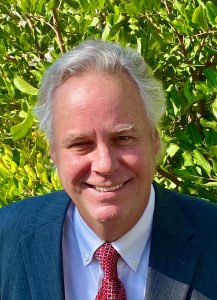
Flanigan’s Eco-Logic: Earth Day at 52
Yesterday morning I queried staff on the value of Earth Day and comments ran the gamut. Anachronistic? Out of date? Does it have any particular value? A day of proclamations? Could EarthDay be down-playing or underselling the immediacy of the existential climate crisis at hand?
Another take: Society is dealing with climate change every day. It’s all over the news, impacting and changing our lives. Earth Day once a year is obsolete. Another comment: Earth Day has become commercialized. She’s getting Earth Day marketing, sales and discounts on stuff. More stuff is just what the Earth does not need!

It’s hard to downplay that over 75,000 organizations in 193 countries, have been and will this year, engage about 1 billion Earthlings. That’s about 14% of the population… globally. Sure, they engage in different ways; but for all, Earth Day provides a touchstone event. A staffer concurs with its relevance: “It’s important for our youngest. It’s a time for our teachers to educate, to gear curriculum, to teach kids that they are part of something larger.” Mother Earth.

TreePeople reports that Earth Day is its favorite day of the year… but that trees need us every day! Many of us say the same thing. Earth Day must be every day, not once a year! Hats off to those that have and are taking big steps… buying EVs, solar systems, insulation, and windows! Hats off to all of us who take small, but meaningful steps each day as part of our routines… steps to care for the planet… to use less water, less energy, to drive less, recycle, compost, eat healthy! At EcoMotion, the collective effect is what we call the power of the increment.
Let’s go back to 1962 and Rachel’s Carlson’s book, Silent Spring. Her words were shocking and lit a fire. Imagine a springtime with no birds chirping gaily, no insect chorus at night! Pesticides be damned. Earth Day was formed, creating rallies akin to Vietnam War peace marches, with the positive mission to eradicate pollution. Ten percent of all Americans took action that day in 1970 – I did – and out of this new movement sprang the U.S. Environmental Protection Agency, the Clean Water Act, the Clean Air Act, and the Endangered Species Act. California instituted CEQA, the California Environmental Quality Act. Enough of the industrial mess.
Earth Day 20, 1990, went global… engaging 200 million people in 141 countries around the world. That led to the United Nation’s first Earth Summit held in Rio De Janeiro in 1992. Today, the annual Earth Day event, led by EarthDay.org, engages a billion people in one way or another each year. They are motivated to take action, to speak out for Earth, to prioritize Earth and its good health. Earth Day is now the largest secular movement in the world, non-religious and non-spiritual. It’s about stewardship, responsibility, compassion, comfort, and joy. It’s about clarity of conscience and knowing that you left your home and community a little better than when you got it. This year’s theme is “Invest In Our Planet.” Let’s all take action.
Quote of the Week
“When we see renewable energy peaks like this [California’s 97.6% renewable contribution]
we are getting to re-imagine what the grid will look like for the generations to come.
These moments help crystallize the vision for the modern, efficient,
and sustainable grid of the future.”
California Power Grid Hits 97.6% Green Peak
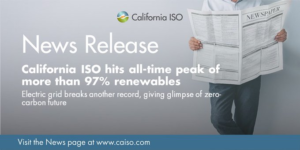
At 3:39 PM on Sunday, April 3, the California Independent System Operator (CAISO) set a new record by delivering 97.6% renewable energy to the State’s power grid. A week earlier it had hit 96%. The all-time highs are for brief periods only but “solidly demonstrate progress in achieving California’s clean energy goals,” noted a CAISO commissioner.
CAISO reports that wind and solar production’s contribution to the grid typically peaks in the spring, due to mild temperatures (which depress demand) and the angle of the sun allowing for an extended period of strong solar production. California’s target is for its power system to be net zero carbon by 2045.
I checked out the CAISO website while writing this news. At 11 AM on April 21 the current demand was 22,231 MW; current renewable capacity was 16,126 MW, equivalent to 73% of the served load. Of that, 10,880 MW was solar (69%) and 3,416 MW was wind (21.7%), followed by geothermal, biomass, biogas, and small hydro.
The California power grid also made new records for solar and wind. Solar hit a peak generation value of 13,628 MW just after noon on April 8. The all-time wind peak capacity was recorded on March 4 of 6,265 MW just before 3 PM. There is now more than 15,000 MW of grid-connected solar power capacity serving the California grid, and almost 8,000 MW of wind now online in California. Another 600 MW of solar and 200 MW of wind are expected to be commissioned by June of this year. The system also has 2,700 MW of storage, mostly lithium-ion batteries. This is expected to grow to 4,000 MW by June 1, 2022.
Tidal Power in the United Kingdom
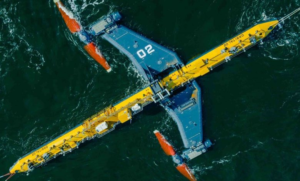
Image Courtesy of Orbital Marine Power
The United Kingdom has been supporting renewable energy through its CfD program, “Contracts for Difference” program. This fourth allocation is $366 million USD, and the government will ensure that $26 million per year is “ring-forced” (earmarked) for tidal stream projects. The ring-forced amount could result in 34 MW of tidal energy capacity. Tidal could also win auction pricing in the broader renewable energy category.
Researchers in the United Kingdom believe that tidal power could provide 20% of the nation’s power needs. Right now, the U.K. gets less than 3% of its power from tidal energy. At the end of 2021, however, the U.K. government announced its decision to invest in tidal power each year, part of its flagship renewable energy auction scheme.
The auction is a key element in the government’s plan to support up to 12 GW of low-carbon electricity capacity. This fourth round was larger than the first three combined. U.K. tidal power companies include Orbital Marine Power, SIMEC Atlantis Energy, and Nova Innovation. They are poised to deliver tidal power for $271/MWh.
In April of 2021, the world’s largest, most powerful tidal turbine was launched in Scotland. The 2 MW unit produced by Orbital Marine Power is a 680-tonne tidal turbine. It was moved from the Port of Dundee into the River Tay. The O2 turbine has a 245-foot-footlong hull structure with twin 1 MW power generating nacelles at the end of retractactable leg structures. Its 33-foot blades give the O2 more than 6,400 square feet of sweep area to capture flowing tidal energy.
Spain’s First Wave Energy Power Plant
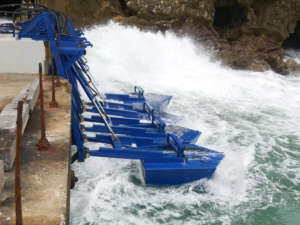
Eco Wave Power is a Swedish wave energy power company that was founded in Israel. Today it secures licenses, constructs and interconnects plants, and sells electricity in accordance with approved production quotas. Eco Wave Power has projects in operation in Israel and Gibraltar, and projects planned in Portugal and California. The Gibraltar project has been in operation for six years and has proven resilient despite the massive storms for which Gibraltar is known. Recently, Eco Wave signed an agreement with Port Adriano to build Spain’s first wave energy power plant. The 2 MW project is planned for the south coast of the Island of Mallorca.
Harnessing wave energy comes in many forms. Some systems are at sea… using the undulating motion of the waves to generate electricity. The Eco Wave System is onshore. It is based on the use of dinghy-like “floaters” on articulated arms that ride waves up and down. The system generates power with waves as small as 20 inches. If the waves are too strong, the floaters are hoisted up and out of the water level. During normal operations, the movement of the floaters compresses fluids that run through hydraulic pistons. After decompression, the fluid flows back to the tank ready for reuse.
California has 840 miles of coastline, and 840 miles of waves! A U.S. Energy Information Administration report found a 2.64 trillion kilowatt-hour potential for wave energy in the United States, equivalent to a whopping 66% of all electricity generation nationally.
The Los Angeles County Economic Development Corporation developed an application with Eco Wave Power and AltaSea to demonstrate wave energy as part of its Build Back Better Regional Challenge. The LA plan is to install a demonstration Eco Wave Power system at AltaSea at the Port of Los Angeles. AltaSea is a nonprofit dedicated to scientific collaboration, advancing an emerging blue economy (an economic term relating to exploitation, preservation and regeneration of the marine environment), and inspiring the next generation. Its President and CEO, Terry Tamminen, notes that “Wave energy is exciting. It is renewable. And it doesn’t stop when the sun goes down or the air is still.”
Carbon-Neutral Lithium
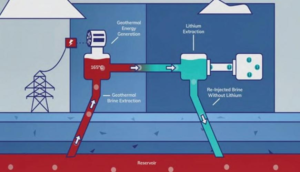
Mining lithium is energy intensive, resulting in substantial CO2 emissions. The mining also requires lots of water which in many instances is scarce. So a new mine in Germany that intends to be not only carbon neutral, but potentially carbon positive, gets one’s attention.
EIT InnoEnergy, the European innovation engine for sustainable energy, announced a partnership with Vulcan Energy Resources Limited, a start-up lithium company to produce the world’s first completely carbon neutral lithium in Germany. The project is part of the European Battery Alliance, a strategic industry initiative. The lithium will mostly be used for battery production for EVs. Europe is already one of the fastest-growing, lithium-ion battery production centers in the world.
The project will be located in the Upper Rhine Rift, in the states of Baden Wuertemberg and the Rhineland-Palatinate. The region contains Europe’s largest lithium resource and one of the largest worldwide. Vulcan will pump hot lithium-rich brine from production wells up to the surface, then use the cogenerated geothermal energy to drive a proprietary lithium extraction process. Excess renewable energy will be sold, resulting in a carbon footprint that could be negative.
49 MPG in Four Years!

New vehicles sold in the United States must have a fleet average fuel economy of 49 miles per gallon (MPG) by 2026. The new federal standards were issued by the U.S. Department of Transportation on April 1, 2022. They are intended to improve fuel efficiency, cut down fuel costs, and reduce emissions.
The new rules undo a rollback on standards. Standards had been rising by 5% per year until the previous administration rolled them back to a 1.5% per year increase. The new requirements increase gas mileage by 8% per year for 2024 and 2025 model years, and then 10% in the 2026 model year. The National Highway Traffic Safety Administration projects that the new rules will raise the price of a new vehicle in the 2029 year by $1,087.
Meanwhile, in California, Governor Gavin Newsom has signed an executive order declaring that 100% of new passenger vehicles will be zero emissions by 2035. New medium and heavy-duty trucks will be 100% zero emissions by 2045. Same for off road vehicles that need to be 100% zero emissions by 2045. At the end of 2021, about 6% of California’s new car sales were electric, but a third of those are plug-in hybrids that do not qualify as net zero. Thus, while growing rapidly, about 4% of all car sales were all-electric in the Golden State in 2021; 2% is a comparable value for the country. The market share for all-electric trucks rounds off to 0%. We’ve got a long way to go to meet the mandate!
Southern California Mass Transit Milestones

Metrolink operates in a five-county region providing heavy rail service on 538 miles of track for Los Angeles with connections to LA Metro buses and trains at many stations. Both agencies offer free rides on Earth Day. Metrolink is the first passenger rail agency in the United States powered by renewable fuel. Its locomotives now run entirely on “cleaner-burning” recycled natural fats and vegetable oils after a pilot program that began in 2021. The use of the renewable fuel will decrease its greenhouse gas footprint by up to 80%. Metrolink continues to pursue zero emissions technologies like hydrogen fuel cells and battery electric solutions. It sees renewable fuel as a bridge to zero emissions.
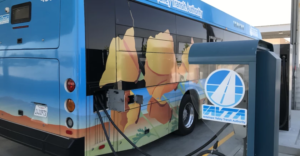
The Antelope Valley Transit Agency (also connected with Metrolink) has achieved a similar milestone of national significance: Its bus fleet is 100% electric making it the first all-electric transit agency in North America. AVTA began service in 1992 and today serves a population of ~450,000 in a 1,200 square mile area including Lancaster and Palmdale in northern Los Angeles County. In 2012 it purchased 15 diesel hybrid electric buses, followed by 2 all-electric buses in 2014. AVTA vowed to become all-electric in 2016. Its board made the bold decision to buy 85 all-electric buses from BYD. Currently its fleet includes 57 BYD buses, 10 GreenPower EV Start Microtransit vans, and 20 battery electric commuter coaches from Motor Coach Industries.
European Hydrogen Backbone Initiative
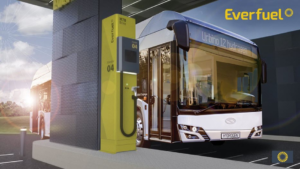
Everfuel, a Danish company, has signed a deal to build a hydrogen refueling station in Germany. The station will be a heavy duty refueling station for 20 fuel cell buses in Wuppertal that can be expanded. The station is part of the European Hydrogen Backbone initiative.
The European Hydrogen Backbone, or “EHB” initiative, plans five, pan-European corridors and nearly 18,000 miles of pipelines connecting industrial clusters, ports, and regions of abundant demand. It has accelerated its program to produce 20.6 million tons of renewable, low-carbon hydrogen from 2025 – 2030.
A group of 31 European gas transmission operators takes this a step further, proposing a hydrogen network of 33,000 miles by 2040. About 60% of the pipelines will be repurposed gas pipelines, and 40% new, including subsea links.
In related news, the United Kingdom’s “Hydrogen Investor Roadmap” calls for 10 GW of low-carbon hydrogen by 2030. Half of this will be “electrolytic hydrogen,” meaning that the hydrogen will be created through electrolysis. The Ontario government has released a report on achieving a low-carbon hydrogen economy. It supports a proposal to build a 20 MW electrolyzer at Niagara Falls for hydrogen production.
The NetPositive Podcast Updates

Recently Released:
- This issue of EcoNet News, Volume 24, Issue #4 is also available in podcast format
- The NetPositive Podcast: A Conversation with Allen Hershkowitz
- The NetPositive Podcast: A Conversation with Craig Perkins
- The NetPositive Podcast: Earth Day Special with the Flanigans
Check out and subscribe to The NetPositive Podcast with Ted Flanigan on Spotify, Apple, and Google. Episodes include Convos (Conservations and Crash Courses), the News (EcoNet News), and Uni (the EcoMotion University).
